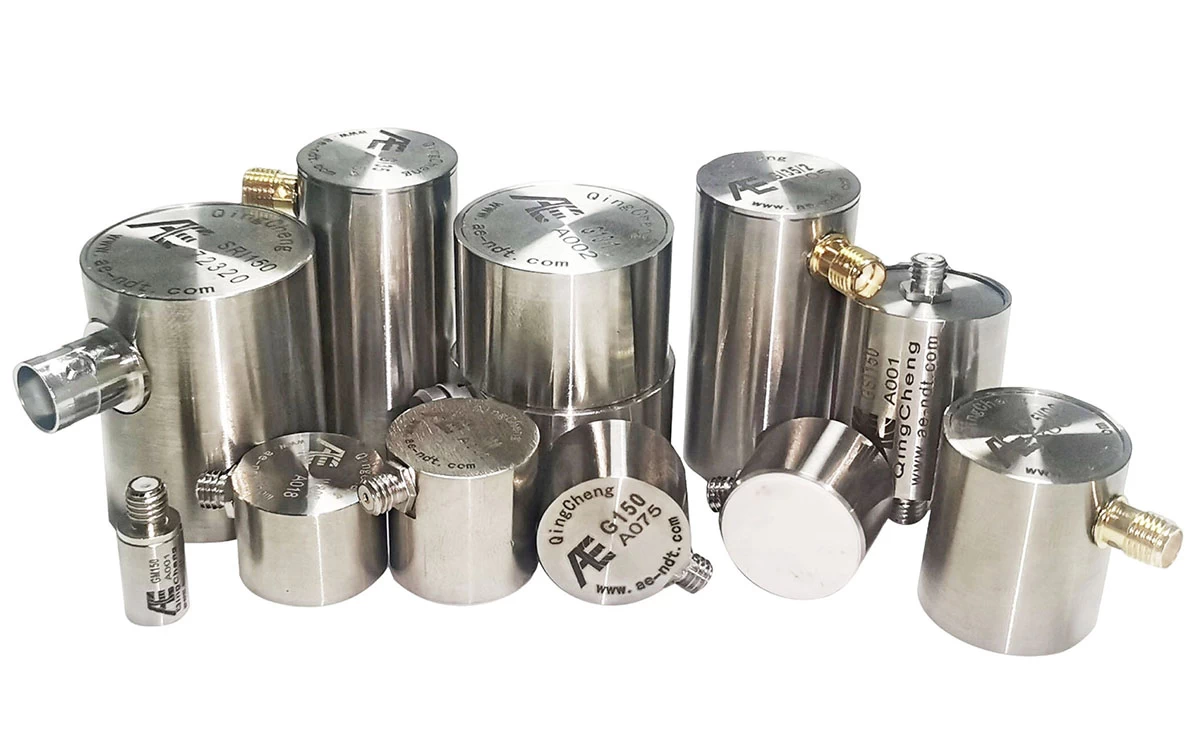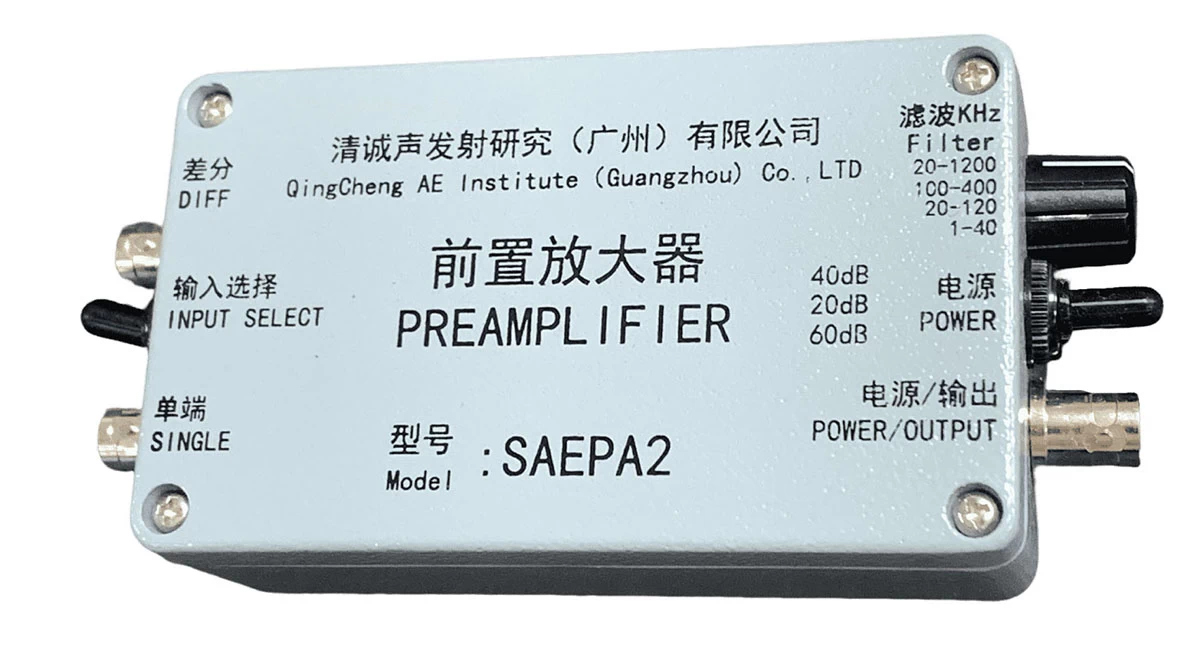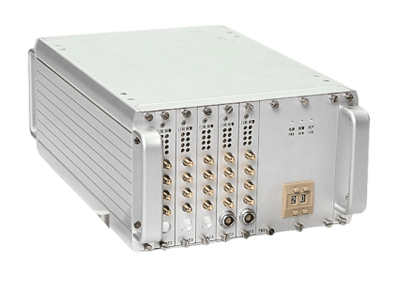What is Non-Destructive Testing?
Non-destructive testing (NDT) encompasses a range of methods that ensure the integrity of parts without causing any damage. These techniques utilize various principles from physics, chemistry, and mathematics to assess individual or group components for any flaws or defects.
By employing non-destructive evaluation/examination (NDE) or non-destructive inspection (NDI), NDT allows for thorough examination of components while preserving their structural integrity. It employs diverse inspection techniques that enable comprehensive testing without compromising the integrity of the parts being assessed.
In practical terms, NDT serves as a broad term encompassing non-destructive inspection methods, tools, and the entire field of non-destructive inspections.

The primary objective of NDT in commercial applications is to ensure the proper maintenance of critical infrastructure, thereby preventing catastrophic accidents.
While NDT methods are commonly associated with industrial uses, such as inspecting vulnerable areas in an oil refinery's boiler, they also find widespread application in the medical field.
For instance, when an expectant mother undergoes an ultrasound to monitor the well-being of her baby, or when an X-ray or MRI is performed to diagnose an injury, these scenarios fall under NDT use cases.
However, it's important to note that NDT doesn't necessarily involve the use of specialized tools or any tools at all. In industrial settings, for instance, inspectors visually examine the external surface of a pressure vessel to gather data on its condition, without causing any damage. Conversely, the utilization of advanced tools like ultrasonic sensors to detect defects in specific materials or assets also falls within the realm of NDT.
Regardless of the specific application, the common thread across these examples is the collection of data through non-intrusive means.
Here's a table of contents summarizing the information related to NDT covered in this article:
- What is Non-Destructive Testing?
- What Is the Distinction Between Destructive Testing and Non-Destructive Testing?
- Types of Non-Destructive Testing Methods
- Welding NDT
- How Drones Can Help with NDT
What is Non-Destructive Testing?
We’ve already covered what NDT stands for and how the phrase is used in the field. Now let’s dive in and look more closely at some of the details that govern the world of NDT.
THE SIGNIFICANCE OF NDT
When it comes to ensuring proper asset maintenance, the significance of non-destructive testing cannot be overstated.
Here are the key reasons why NDT is widely embraced by companies worldwide:
- Cost Savings. One of the most apparent advantages of NDT over destructive testing is its ability to examine materials or objects without causing harm, thereby preserving them and saving valuable resources.
- Safety. NDT techniques, with the exception of radiographic testing, are generally safe for individuals involved. This aspect adds to its appeal as a method for evaluating assets.
- Efficiency. NDT methods enable thorough and relatively swift asset evaluations, which are crucial for maintaining safety and performance at job sites.
- Accuracy. NDT methods have demonstrated their reliability and predictability, making them essential for maintenance procedures aimed at ensuring personnel safety and equipment longevity.
WHERE IS NDT APPLIED?
If we consider NDT in a broad sense, it can be found in nearly every industry worldwide, as visual inspections are conducted in various forms across workplaces.
However, certain industries specifically require NDT and have established formal processes based on standards set by organizations like API and ASME.
These industries include:
- Oil & Gas
- Power Generation
- Chemicals
- Mining
- Aerospace
- Automotive
- Maritime
In all these industries, inspectors employ different methods to access challenging and elevated locations:
- Scaffolding. Inspectors physically work at height, utilizing scaffolding to gather inspection data.
- Rope access. Inspectors employ rope access techniques to work at height and collect inspection data. You can find more information about the use of rope access in inspections in our comprehensive guide.
- Drones. Inspectors utilize drones to remotely collect inspection data, granting them the ability to safely access confined spaces or remain below elevated locations. Discover more about how drones can be employed for NDT in the following section.
What Is the Distinction Between Destructive Testing and Non-Destructive Testing?
Non-Destructive Testing (NDT) involves acquiring information about a material without causing any permanent alteration or destruction to it. On the other hand, Destructive Testing (DT) is performed by altering or destroying the material in order to gather relevant information.
In essence, the key disparity between NDT and DT lies in the fact that NDT allows inspectors to examine the material without causing damage, while DT involves procedures that lead to irreversible changes.
For instance, in Destructive Testing, a portion of the material may be removed for analysis or modified on-site. Here are a few examples of destructive testing:
- Macro sectioning. This technique involves polishing and etching a small section of a welded material for examination.
- Tensile testing. Also known as tension testing, this destructive technique applies controlled tension to a sample material to observe its reaction. It helps evaluate the material's behavior under specific loads or conditions, including determining its failure point.
- 3 point bend testing. This method assesses the integrity and flexibility (ductility) of a material by subjecting a sample, called a coupon, to bending at three specified points and angles.
NDT AND NDE
While discussing these terms, it is important to highlight a few other commonly used phrases that refer to testing materials without causing destruction.
NDT, as mentioned earlier, is the most frequently used term, but there are a couple of other phrases as well:
- NDE (non-destructive examination or non-destructive evaluation)
- NDI (non-destructive inspection)
In full form, NDE stands for non-destructive examination or non-destructive evaluation, while NDI represents non-destructive inspection.
There are various techniques employed in non-destructive testing (NDT) and non-destructive evaluation (NDE) to gather different types of data. Each of these techniques requires specific tools, training, and preparation.
Some of these methods enable comprehensive volumetric inspections of objects, while others are limited to surface inspections. Similarly, the effectiveness of NDT techniques may vary depending on the material being tested. For instance, Magnetic Particle NDT is suitable only for materials that can be magnetized.
Here are the nine most commonly used NDT techniques:
1. Thermal/Infrared Testing
Infrared Non-Destructive Testing, also known as IR NDT, has been in existence for over 30 years and has recently gained increased attention. This testing method relies on the principle of thermal wave imaging and is categorized as an active thermography technique, as opposed to a passive approach.
The "active" aspect involves using an external heat source to raise the temperature of the object being inspected. In contrast, conventional thermography typically captures the inherent heat emitted by the object.
Thermal/Infrared inspections offer various applications, such as detecting disbonding in aluminum structures like those found on aircraft fuselages or revealing corrosion hidden beneath painted surfaces. Other examples include identifying points of failure in microelectronics, evaluating the penetration of laser welds, and visualizing cracks in wheels.
- Airborne
- Differential AE Sensor
- Flat Frequency Response
- General Purpose
- High Temperature
- Integral Preamp
- Intrinsically Safe AE Sensor
- Low Frequency Acoustic Emission Sensor
- Medium Frequency
- Miniature
- Underground
- Underwater
- Wideband AE Sensor
Acoustic Emission (AE) Preamplifiers
An AE preamplifier is utilized to amplify the acoustic emission sensor output, enabling inspectors to easily interpret and analyze the data. When coupled with appropriate training, these tools empower inspectors to precisely pinpoint and detect defects within a material that might otherwise remain unnoticed to the naked eye.
Sometimes, it becomes necessary to use a preamplifier due to the weak voltage signals produced by acoustic emission sensors. These signals may be as low as a few microvolts and can suffer from attenuation when transmitted over long distances. To counter this issue, the original sensor signal needs to be amplified multiple times before transmission. Typically, an amplification factor of 40 dB is utilized, and the amplified signal is then transferred to the signal acquisition unit through high-frequency coaxial cables.
The preamplifier for acoustic emission performs as an analog circuit and takes the voltage signal output from the sensor as its input. It then produces an amplified analog signal. In addition to amplification, the preamplifier must possess impedance matching and transformation functions. It should also incorporate measures to protect against electrical shocks and be equipped to recover from blocking phenomena. Furthermore, it should be capable of handling a relatively large output dynamic range.
Data Acquisition System
The data acquisition system acts as a crucial link between the AE sensors and the analysis software. Its primary function is to collect the signals from the AE sensors, which are initially amplified by preamplifiers, and then convert them into digital data format that can be easily processed and interpreted by the software. This critical step ensures the accurate representation and analysis-readiness of the raw data.
Analysis Software
Analysis software produces simultaneous and real-time visualizations of Acoustic Emission waveforms. Undoubtedly, the analysis software plays a vital role in AET equipment. Its significance lies in its ability to decipher the digital data provided by the data acquisition system and translate it into valuable insights. By employing advanced algorithms and pattern recognition techniques, the software can precisely identify the location, magnitude, and characteristics of defects or anomalies within the material. This capability is instrumental in enabling effective analysis and assessment of the inspected substance.
Acoustic Emission Testing Equipment
When materials are cracking, deforming or otherwise becoming damaged, they produce a kind of sound. Sometimes, these sounds are loud and obvious. Other times, they are much more subtle, and to detect them, you need to use specialized equipment. Detecting these subtler sounds through acoustic emission testing (AET) can reveal cracks and other defects that are forming which may cause significant issues, such as equipment failure, in the future if not corrected.
Acoustic emission testing can be conducted either in the field using portable instruments or in a stationary laboratory setting. Typically, a complete system consists of AE sensors, preamplifiers, filters, and amplifiers, along with measurement, display, and storage equipment such as oscilloscopes, voltmeters, and personal computers.
Here are the types of acoustic emission equipment used in acoustic emission NDT.
Acoustic Emission Sensors / Acoustic Emission Transducers / Strain Gauges
These devices collect raw acoustic emission data. They are also called:
- AE sensors
- Piezoelectric transducers
- Piezoelectric sensors
- Strain gauges
Acoustic Emission (AE)Sensor / transducer Model List
The most widely used transducers for acoustic emission (AE) testing typically consist of two sets of interdigital transducers. These transducers are composed of two comb-shaped arrays of metallic electrodes that interlock, resembling a zipper.
Various types of non-destructive testing (NDT) acoustic emission sensors are available for different applications:
- Airborne
- Differential AE Sensor
- Flat Frequency Response
- General Purpose
- High Temperature
- Integral Preamp
- Intrinsically Safe AE Sensor
- Low Frequency Acoustic Emission Sensor
- Medium Frequency
- Miniature
- Underground
- Underwater
- Wideband AE Sensor
Acoustic Emission (AE) Preamplifiers
An AE preamplifier is utilized to amplify the acoustic emission sensor output, enabling inspectors to easily interpret and analyze the data. When coupled with appropriate training, these tools empower inspectors to precisely pinpoint and detect defects within a material that might otherwise remain unnoticed to the naked eye.
Sometimes, it becomes necessary to use a preamplifier due to the weak voltage signals produced by acoustic emission sensors. These signals may be as low as a few microvolts and can suffer from attenuation when transmitted over long distances. To counter this issue, the original sensor signal needs to be amplified multiple times before transmission. Typically, an amplification factor of 40 dB is utilized, and the amplified signal is then transferred to the signal acquisition unit through high-frequency coaxial cables.
The preamplifier for acoustic emission performs as an analog circuit and takes the voltage signal output from the sensor as its input. It then produces an amplified analog signal. In addition to amplification, the preamplifier must possess impedance matching and transformation functions. It should also incorporate measures to protect against electrical shocks and be equipped to recover from blocking phenomena. Furthermore, it should be capable of handling a relatively large output dynamic range.
Data Acquisition System
The data acquisition system acts as a crucial link between the AE sensors and the analysis software. Its primary function is to collect the signals from the AE sensors, which are initially amplified by preamplifiers, and then convert them into digital data format that can be easily processed and interpreted by the software. This critical step ensures the accurate representation and analysis-readiness of the raw data.
Analysis Software
Analysis software produces simultaneous and real-time visualizations of Acoustic Emission waveforms. Undoubtedly, the analysis software plays a vital role in AET equipment. Its significance lies in its ability to decipher the digital data provided by the data acquisition system and translate it into valuable insights. By employing advanced algorithms and pattern recognition techniques, the software can precisely identify the location, magnitude, and characteristics of defects or anomalies within the material. This capability is instrumental in enabling effective analysis and assessment of the inspected substance.
What are the Advantages and Limitations?
Acoustic Emission Testing is a qualitative NDT method. It differs from most other nondestructive testing (NDT) methods in two key respects. First, the signal has its origin in the material itself, not in an external source. Second, acoustic emission detects movement, while most other methods detect existing geometrical discontinuities.
Acoustic emission testing has many advantages over other methods. These include:
- In-service continuous monitoring with alarms is possible
- Pre-service and in-service testing can be done.
- Entire structures can be monitored from various locations
- Online monitoring of components and system is possible.
- Increased sensitivity compared to conventional testing methods
- Shorter testing time than other NDT techniques
- Real time monitoring
- Real time evaluation and remote scanning is possible.
- Ability to detect a range of damage mechanisms including, but not limited to, fibre breakages, friction, impacts, cracking, delamination and corrosion in their early stages, before they become significant issues
- Can be conducted during operation, during qualification (proof) testing or development testing
- Can locate damage sources and can be differentiate these based on acoustic signatures
- Global monitoring of a structure
- Assesses the structure or machine under real operational conditions
- A non-invasive method
- Operational in hazardous environments, including high temperatures, high pressures and corrosive and nuclear environments
- Can be conducted remotely
- Can detect damages in defects that are difficult to access with conventional non-destructive testing techniques
However, the method does also have some limitations:
- Limited to assessing structural integrity or machine health by locating issues, further inspection is usually required to fully diagnose issues.
- Cannot detect defects that may be present, but that do not move or grow.
- Can be slower than other non-destructive testing techniques.
- Influence of ambient noise and attenuation of signals may result in poor output.
- Sophisticated data processing devices are required.
- AE results are set firmly to the knowledge and experience of the service provider.









